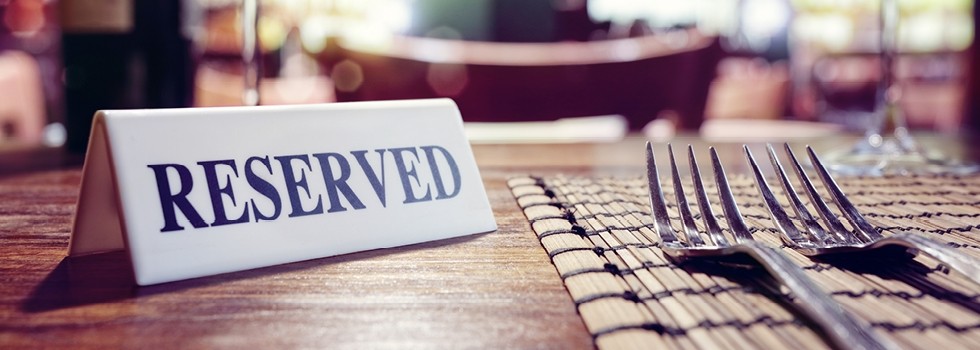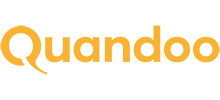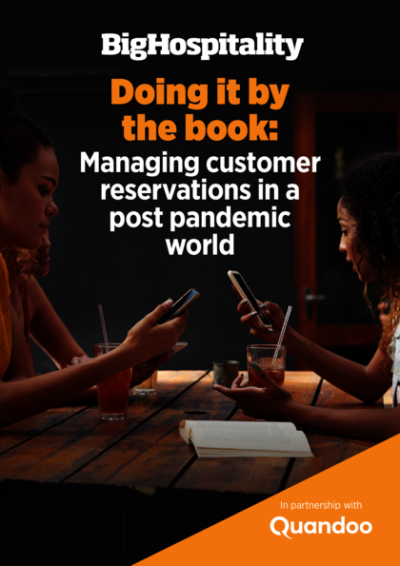Promotional Features
Managing customer reservations in a post pandemic world
Managing customer reservations in a post pandemic world
The hospitality sector has experienced massive change as a result of the pandemic, with customer booking habits different to what they were two years ago.
The Coronavirus pandemic has had a significant impact on the hospitality sector over the past two years with businesses having had to deal with a number of lockdowns, social distancing measures and changes to the way customers can order and be served food and drink.
The pandemic has also changed people’s booking habits, with customers required to make reservations in order to eat and drink in venues immediately after the lifting of the lockdowns, which has led to a shift in customer behaviour that is still being felt today.
With the sector facing challenges including rising food, drink and energy prices, customers with decreasing disposable income, and staff shortages, getting bums on seats has never been so important. Knowing exactly how many customers a restaurant will have on any given day in order for businesses to manage effectively staff rotas and ingredient deliveries as well to be able to respond to sudden changes in demand is also of paramount importance.
Customers have their reservations
The requirement for customers to make a table reservation, even just for drinks, in the period immediately after the first lockdown appears to have had a lasting impact in some customers’ minds, according to research of 150 restaurant and pub businesses conducted by BigHospitality.
People are willing to make last-minute phone and online reservations rather than risk turning up and there not being space, with 75% of businesses saying that, as a result, they keep their bookings open throughout service to be able to accept such reservations
“Our bookings are live the whole time, says Sam Harrison, owner of Sam’s Riverside in Hammersmith. “One mid afternoon we had 100 customers booked, by the time we got to 5pm we were at 140 and during service it fluctuated. I thought at one stage we were going to get to 150 but we ended up doing 138.”
Harrison says that by keeping the reservation book open the restaurant can see in real-time when people are cancelling and then try and fill the empty spaces with walk-ins.
Social media use is restrained
Social media is still an underused channel in terms of reservations, according to the survey respondents.
Just over half (55%) of respondents say that reservations can be made via their social channels, meaning that half of the respondents are still not harnessing the power of social media in terms of encouraging reservations.
When asked which social media channels were the most important for driving bookings, businesses cited Facebook and Instagram as being the most effective. While TikTok is the fastest growing social media platform, most businesses are yet to use it either to promote their businesses or encourage bookings.
Despite a rise in online activity over the past few years, the telephone remains a popular way of making reservations. More than a third of businesses (38%) say that between 21% and 41% of their bookings are taken over the phone with 18% reporting that 41% to 60% of bookings are still made in the more traditional manner.
At pub group Peach Pubs, bookings are fairly evenly split between online and the phone, says marketing director Rebekah Wilkins.
“In 2019 we had a lot more on the phone,” she says. “I think our demographic is sometimes a little bit older and they might be out driving so 50% of our bookings were on the phone. However, that’s now dropped to more like 35%, but is still quite high considering we are in a digital era.”
Staff shortages continue to bite
Staff shortages continue to be a problem for restaurants, exacerbated by the rise of the Omicron variant at the tail-end of last year, according to the research.
Nearly two thirds of businesses (61%) say that they have had to cap reservations because of staff shortages. Of those, 40% say staff illness accounted for cutting reservations by between 0 and 20%, with a similar number (38%) reducing reservations by 21% to 40%.
Some restaurants have been hit particularly hard by staff shortages, with 9% reporting that they had to reduce reservations by between 61% and 80%.
“The only time we block bookings is for team shortages, which has been a challenge with losing teams to Covid,” says Wilkins. “It’s very hit and miss and it’s hard to say how much or how many times but between November and January we have restricted bookings in a handful of pubs on a handful of days every week.”
No-shows remain an issue
No-shows continue to be a problem in the sector and have increased since the lifting of lockdown for many businesses.
A report by CGA published at the end of last year put the annual cost of no shows in the hospitality sector at around £17.6bn a year, with more than a quarter of 18-34-year-olds failing to show up for reservations.
Since the hospitality sector has reopened from lockdown, one in seven (14%) people have not turned up to their reservation, with one in eight (12%) people saying they are more likely to no-show than they were before the pandemic.
When asked whether no-shows had got worse or improved, 58% of businesses in the survey reported that the situation had got worse.
At Spanish restaurant group Ibérica, the no-show rate has worsened since the start of the pandemic and is currently at 3.3% across the group.
“However, there are different factors to consider such as in 2020 we took less bookings due to the different restrictions along the year,” says group reservations and events manager Laura Rodriguez. “If we compare 2021 with 2019 with both periods being considered ‘normal’, then the no show rate has decreased by 18%, which shows that guests are being more mindful and are cancelling bookings instead of just not showing up.”
Some 20% of businesses say their current rate of no-shows is between 21% and 40%, with 4% of businesses hit even harder by them, with a no-show rate of between 41% and 60%. Two per cent of businesses report a no-show rate of between 81% and 100% with restaurants that do a relatively small number of covers being hit especially hard by the practice.
Not every business is reporting a rise in no-shows. At Oklava in Shoreditch, the number of people failing to honour their bookings has dropped, according to co-owner Laura Christie. “The number of no shows for us has really improved; it is something we’ve put a lot of work into over the past year.”
A reason for this is that Oklava asks parties of more than two people to use a card to secure the booking. Customers get an email to confirm their booking at the time they make it, followed by another 24 hours in advance and a text an hour before to remind them, which Christie says has also helped lower the rate of no shows.
“We did try this on parties of two as well, but that really impacted bookings,” she adds.
This article uses data from a report entitled Doing it by the book: Managing customer reservations in a post pandemic world. To download the full report click here.


